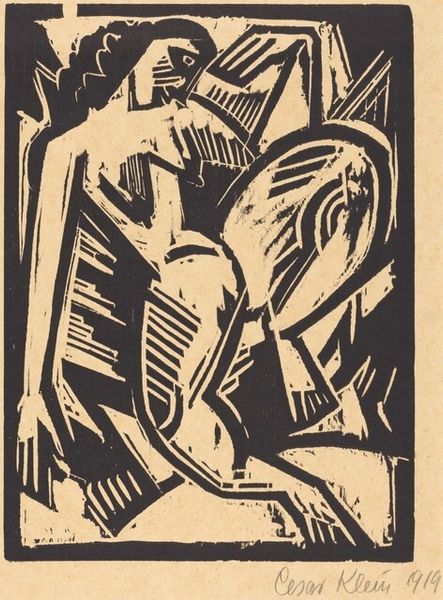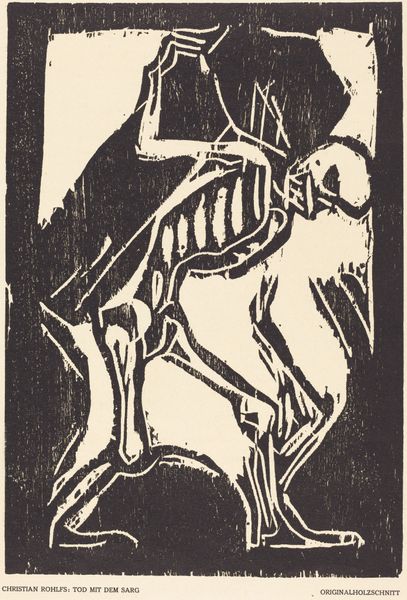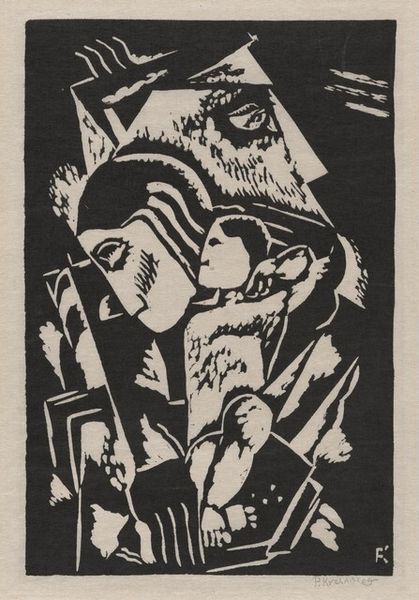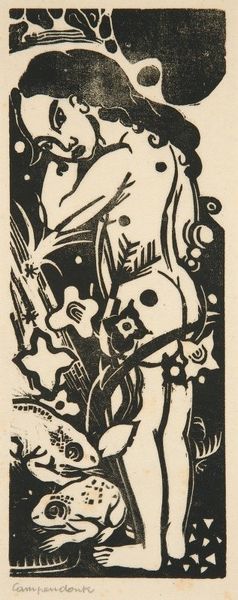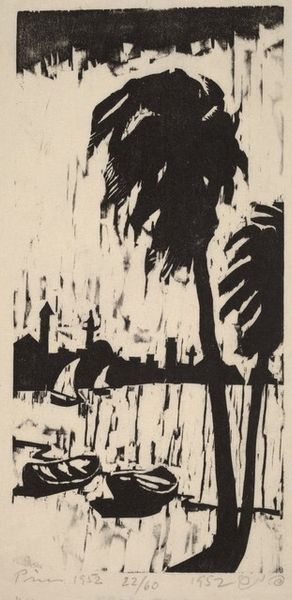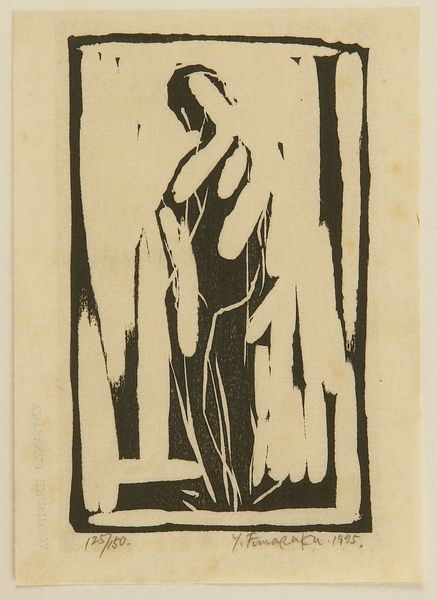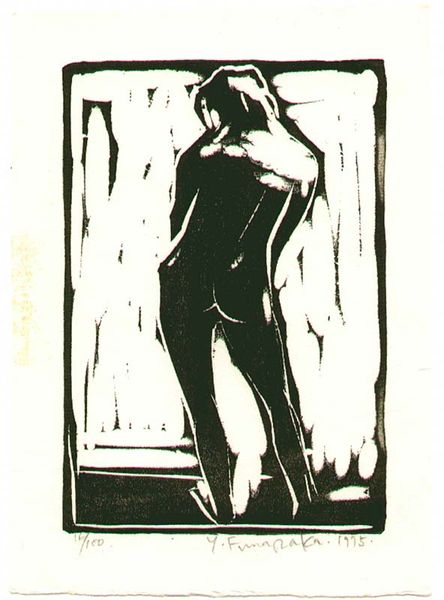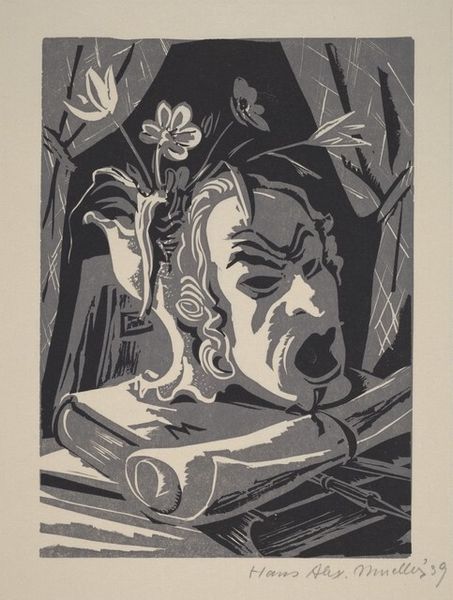
print, woodcut
#
portrait
# print
#
german-expressionism
#
linocut print
#
expressionism
#
woodcut
#
monochrome
Dimensions: sheet: 26 x 17.3 cm (10 1/4 x 6 13/16 in.)
Copyright: National Gallery of Art: CC0 1.0
Curator: This stark, expressive linocut is Erich Heckel's "Young Woman," created in 1913. The portrait showcases the bold, angular forms characteristic of German Expressionism. Editor: Wow, she looks trapped. Those thick, dark lines pressing in from either side feel like bars. I immediately sense a profound sadness in her eyes. Curator: That feeling is precisely what Expressionism sought to convey – raw emotion and inner turmoil. Heckel was a key figure in the movement, alongside artists like Kirchner and Schmidt-Rottluff. They were interested in exploring subjective experience in response to the societal changes sweeping through Europe at the time. Editor: It’s fascinating how such a limited palette – just black and beige here – can evoke such intensity. I am seeing her anxiety of the rising patriarchy, it gives me a chill. And her downcast gaze--is she giving in or ready to resist? Curator: The use of woodcut and linocut as mediums was deliberate. The process of carving and printing lends itself to bold contrasts and simplification, which further amplify the emotional impact. These artists are grappling with societal issues in these intense times of identity politics. It shows on her. Editor: Look at how the artist uses lines to suggest the planes of her face. It’s almost brutal, yet somehow also tender. It also makes her feel very grounded, not someone to be pitied, but witnessed and learned from. What is her story? Curator: That’s a vital question, the ambiguity allows for interpretations, opening it up for current social analysis of gender, and marginality of the period, aligning perfectly with current intersectional understanding and theory. Editor: Thinking about our present-day struggles with individual identity, freedom, and purpose, this portrait really speaks to me. It's a raw depiction of human emotion-- and this young woman's story is just as timely as a century ago. Curator: Yes, considering art history together with theory allows the portrait to continue to speak on political struggles for identity and freedom, it has new meanings today, more than a century later.
Comments
No comments
Be the first to comment and join the conversation on the ultimate creative platform.
